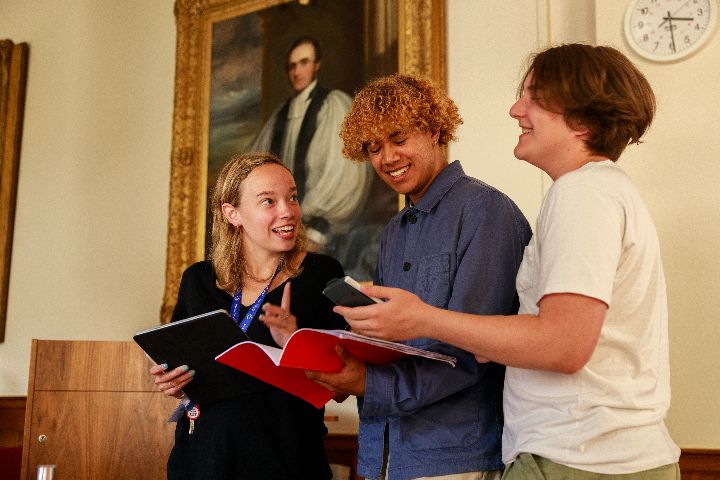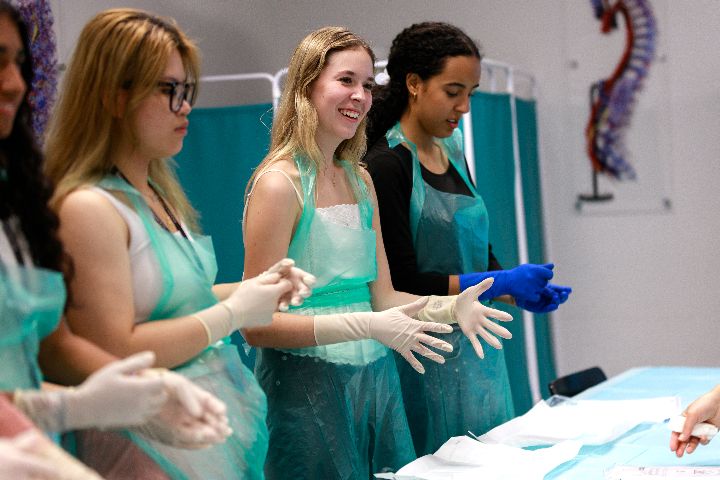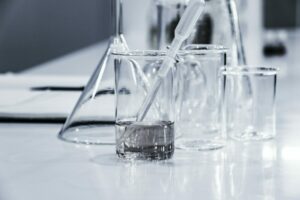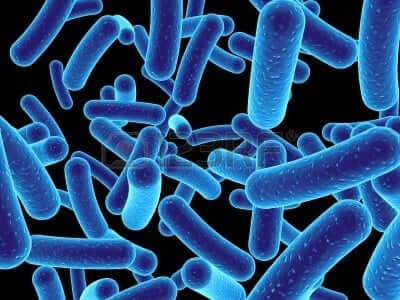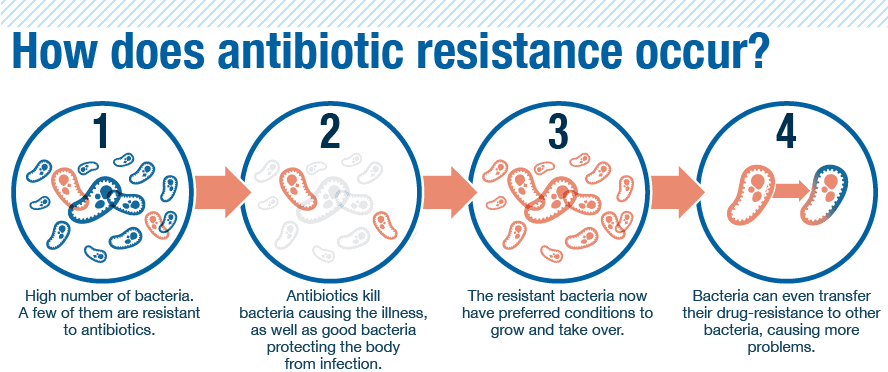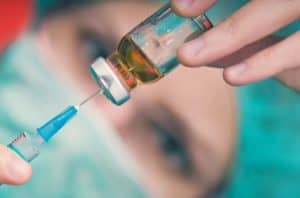The big question germaphobes often ask themselves is ‘why do we need bacteria’?
The fact of the matter is, we could not survive without all the bacteria living on and inside us.
Bacteria act as part of our immune system. They help us to digest foods such as dairy that we cannot break down ourselves, and provide us with nutrients and minerals that we need to survive.
From the moment of birth, your body is flooded with thousands of species of bacteria – 1ml of colonic contents contains more microbes than there are humans on earth! That’s 7.9 billion by the way!
Bacteria are astonishingly numerous and diverse. Scientists from the University of Georgia estimate the number of bacteria on earth to be over 5 million trillion – that’s more bacteria than there are stars in the universe!
Prokaryotes like bacteria evolved around a billion years before the first eukaryotic cells. This means that they are astonishingly diverse. The bacteria Escherichia coli and Clostridium tetani have less in common than humans do with corn.
Bacteria Make Up Our Microbiome
The average adult human has around 30 trillion of their own cells. However, inside and on these human cells are 100 trillion bacteria cells.
That means that our human cells are outnumbered by over 3:1 by bacteria. Together, all of these bacteria make up our microbiome. Everyone’s microbiome is different – overall 99% of your uniqueness to other humans is due to microbes.
Although almost everyone’s guts contain the same major classes of microbes, the exact balance is different. Most useful food is absorbed in the ileum and therefore this is where the greatest proportion of bacteria reside in our bodies.
15% of the food digested is used by microbes in the colon. They use this to feed themselves but also to make short-chain fatty acids, digest lactose, and make amino acids.
Almost all bacteria are harmless to humans. Less than 1% of bacteria can make you sick. Almost all of them are commensal – this is where the bacteria get along with each other and us.
Many of these bacteria live in symbioses, where the presence of two different types of bacteria is beneficial for both. This might occur when one species feeds on the waste products of another.
The Rise of Antibiotic-Resistant Bacteria
Most of the species of bacteria inside us work together – most of the time there is a finely tuned balance between them, but sometimes one species may get the upper hand and divide so much that they out-compete some of the others. This can lead to us getting ill.
However, microbes have their own defence tactics – antibiotics – these are chemicals secreted by the bacteria that can kill other specific bacteria. Alexander Fleming discovered penicillin 1928, lots of different types have been mass-produced and prescribed to patients with all sorts of diseases.
However, this “miracle cure” has been greatly overused.
Ready to take your learning further?
Join Succeed, our free platform for ambitious students aged 13-18 to get future-ready. Access expert-led masterclasses, interactive
goal-setting tools, and exclusive content.
On the Cusp of a Post-Antibiotic Era
In 2014 the World Health Organisation (WHO) announced that we are on the cusp of a post-antibiotic era. The UK’s chief medical office even called for antibiotic resistance to be placed alongside terrorist attacks on the national risk register. WHO also produced a list of requirements to try and minimise the evolution of drug-resistant bacteria.
Biology Study Tips: Are Humans Still Evolving?
Doctors are strongly discouraged from prescribing antibiotics unless there is clear evidence that the patient is suffering from a bacterial infection (as opposed to a viral infection).
People taking antibiotics are instructed to only take antibiotics when prescribed by their doctor and to ensure that they complete the full prescription. This is to try and kill bacteria that are only partly resistant – stopping treatment too early promotes the growth of drug-resistant bacteria.
Mutations
Antibiotic resistance occurs through natural selection. The DNA of all bacteria, even of the same species is slightly different – this is due to mutations.
If you have a bacterial infection and take some antibiotics, most of the bacteria will be killed, but by chance, a very small number will have mutated so that they are immune to the effects of the antibiotic.
Once all the other bacteria have died, the resistant bacteria suddenly have a food source all to themselves, with little competition. They divide rapidly and soon there is a whole colony of bacteria which are resistant to the antibiotic.
It is estimated that at least 2 million people in the US become infected with antibiotic-resistant bacteria such as methicillin-resistant Staphylococcus aureus (MRSA) bacteria each year, and of these, at least 23,000 die solely due to this infection.
The problem with killing bacteria
Not that long ago, as many as four in ten babies died before they reached their first birthday. Lethal epidemics such as smallpox, scarlet fever, tuberculosis, cholera and pneumonia swept through the densely packed, poorly sanitised cities.
There has been a remarkable improvement in the last century and now fewer than five babies in a thousand are expected to die before they turn one.
Diseases like cholera and scarlet fever are rarely a problem in developed countries and smallpox has been completely eradicated.
However, this does not mean that the human population has become healthier. New, modern plagues such as obesity, type I diabetes, asthma, allergies, coeliac disease and many others are on the rise.
Interesting Read: Why Do We Age?
Around a third of British teenagers are estimated to have hayfever. Well-kept records from Finland show that the number of new cases of type I diabetes each year has increased by 550% since 1950.
One in every eleven children is estimated to have asthma and studies in the US showed a 50% increase in childhood asthma between 2001 to 2011. 50 years ago, food allergies were very rare.
Now all schools need to provide food to cater for the hundreds of different allergies and intolerances – e.g. peanuts, milk, soy, fish, fruit and gluten intolerance.
Why are we getting more and more ill?
Many different theories have been suggested to explain why human populations seem to be getting more and more ill: vaccines lead to autism, too little sleep makes you fat, genetically engineered wheat strains are toxic to the human gut and so on.
The most popular of these theories is the “Hygiene hypothesis”. This suggests that the environment in which children grow up today is too clean. Children’s immune systems have little to deal with and so they flare up in response to anything.
In his book “Missing Microbes”, Martin Blaser describes how a lack of exposure to infectious agents, symbiotic bacteria and parasites increases susceptibility to allergies by suppressing the natural development of the immune system.
More Biology Study Tips: What Are Pathogens?
He describes how antibacterial agents – such as antibiotics, antiseptics, and antibacterial gels (which are becoming increasingly common) are drastically reducing the diversity of our microbiome.
When a child is born naturally, it becomes coated with essential bacteria as it moves through its mother’s vagina. The increasing number of Caesarean sections may be having as yet unknown effects on the child’s health. The bacteria we gain at birth help us to digest milk and build up the immune system.
The Future
In summary, bacteria are essential for our survival. It is possible that the increased use of antibacterial products is diving up incidences of diseases such as coeliac disease, type I diabetes, food allergies, asthma and eczema.
There is new evidence to suggest that growing up in too sterile an environment reduces the diversity of our microbiome.
This reduction in the different types of bacteria, particularly in the gut, suppresses the development of the immune system, making it hypersensitive.
On the other hand, the discovery of antibiotics has revolutionised healthcare. Infections that once might have been lethal can now be cleared up with a course of antibiotics.
Humans seem to be in an arms race to invent new antibiotics to treat infections before the bacteria become resistant to them.
Pharmaceutical industries are being pressed to put more time and effort into developing new types of antibiotics – there have been relatively few new antibiotics developed since the 1980s compared to previous periods.
It is important that we stop the overuse of antibiotics now or otherwise we may enter a post-antibiotic era, where we can no longer treat the most serious infections on the planet.
Does the science behind life fascinate you?
We hope you found the above post insightful and interesting. If you have an interest in the science behind life, consider signing up for our award-winning Biology Summer School where you will discover what makes something ‘alive’ and learn about the evolutionary journey of living organisms.
Sources:
Missing Microbes – by Martin Blaser
WHO – http://www.who.int/mediacentre/commentaries/stop-antibiotic-resistance/en/
